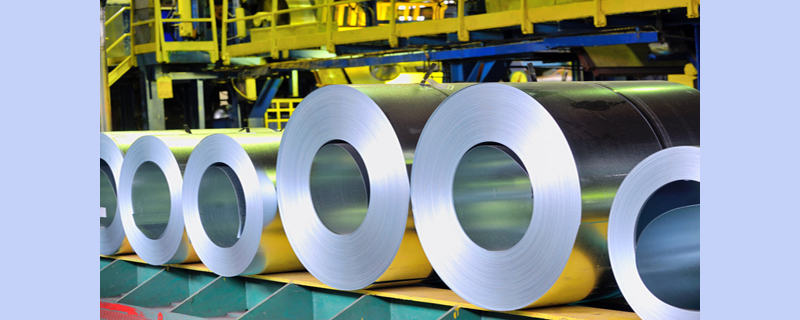Steel Will Burn Through Emissions Budget in 15 Years
European steel will burn through emissions budget 15 years ahead of time, unless new technologies are deployed within the next decade
- Only a quarter of these companies’ carbon budget remains, and current trajectories would see the industry exceed its budget in 2035.
- Companies have between now and 2033 to stop using current production methods and invest in new steelmaking technologies.
- The cost of transitioning is estimated at between US$4 and 34 billion for these companies, so they will need to rely on public funding and partnerships.
- SSAB and ArcelorMittal rank highest on their readiness for the transition, while Severstal, Metinvest and Erdemir are identified as being least prepared.
Tuesday, 14th September 2021, London: A new report from Industry Tracker, the climate research house for investors, has found that the European steel industry has less than 26% (12-35%) of its carbon budget remaining and companies must rapidly shift their business models to reach net zero. This means the industry’s existing assets could release 2.3 billion tonnes of CO2 in their lifetime, compared to a 2050 budget of just over 3 billion (based on the IEA’s Net Zero Emissions scenario).
The report, Steeling for Net Zero, provides an in-depth assessment of 10 of the largest and most impactful steel companies, that account for 68% of primary steel production in Europe, including ArcelorMittal, Tata Steel, Thyssenkrupp and SSAB. The research analyses how these companies are positioned to action transition plans and achieve net zero, based on their targets and existing asset portfolios.
Having been on an upward trajectory since the mid-20th century, emissions from steel now account for 7-9% of all global emissions, and demand for the metal is on the rise.
The biggest contributor to emissions from the steelmaking process comes from the blast furnace. This is the dominant method of making primary steel and has been in use since the 14th century. With this carbon intensive method, there is no way of achieving the required reduction in emissions to meet the EU’s 2050 net zero target. Reductions from efficiency improvements have all but plateaued – over the last two decades, the companies analysed have only reduced their emissions intensity by an average of 1% per year.
Blast furnaces have a long life cycle of about 15-20 years before they need upgrading. This is an expensive process, costing on average US$175 million, meaning these furnaces cannot be shut down prematurely without incurring write-offs. This risks companies getting locked in to carbon intensive methods unless they start investing in new technologies and timing their transition correctly.
Industry Tracker’s analysis finds that these companies will need to stop renewing blast furnaces before 2030 and have between now and 2033 to begin investing in new technologies, including green hydrogen steelmaking. The estimated cost of making the shift to green hydrogen DRI ranges between US$4 and 34 billion for companies, depending on the size of their current asset base. Using asset-level data, it is revealed that these companies have collectively used up three quarters of their 2050 carbon budget, and in a worse case projection, 3 companies have already exceeded their budget from locked-in emissions.
8 of the 10 companies analysed have emissions reduction targets, with ArcelorMittal, Voestalpine, Tata Steel and Salzgitter all making commitments to become net-zero, climate or carbon neutral by 2050, whilst SSAB aims to achieve this by 2045. However, most of the emissions cuts outlined in these targets come after 2030, when they are at high risk of missing the window for investing in vital new technologies.
The analysis does show that some of the leading European steel companies – such as SSAB, ArcelorMittal and Tata Steel – are starting to develop the low-carbon innovations required to significantly reduce their footprint. This includes hydrogen-based steel production which can reduce emissions to near zero, as well as Carbon Capture Utilisation and Storage (CCUS) which could cut emissions from traditional steelmaking routes in the mid-term.
70% of the companies in the report are involved in projects developing “blue” or “green” hydrogen production, including ArcelorMittal, Thyssenkrupp and SSAB. This is encouraging as it indicates they are not just investing in hydrogen-based steel production technologies, but are also getting involved in developing supply chains to ensure they have access to the large volumes of hydrogen needed to scale up this type of sustainable steelmaking.
For the most part, however, these technologies are still early stage, and they must be rapidly scaled and commercialised to meet global climate targets.
The current balance sheets and cash flows of these steel companies are not sufficient to support the cost of the transition. This means companies must leverage partnership opportunities, whilst subsidies, direct public funding and investment capital must be made available.
Carole Ferguson, Managing Director of Industry Tracker, commented: “Steel is used across many products and sectors that are integral to the way we live. However, with a large carbon footprint and a growing emissions profile, steel remains a problem child in the path to net zero. With momentum starting to build for new technologies, particularly green hydrogen, steel companies have the opportunity to break out of their current capital intensive business models. I am optimistic that with public support, cross sector partnerships and investment capital seeking to solve the climate crisis, steel companies have the potential to lead the way in the transition and drive the green hydrogen economy.”








Leave a Reply
Want to join the discussion?Feel free to contribute!